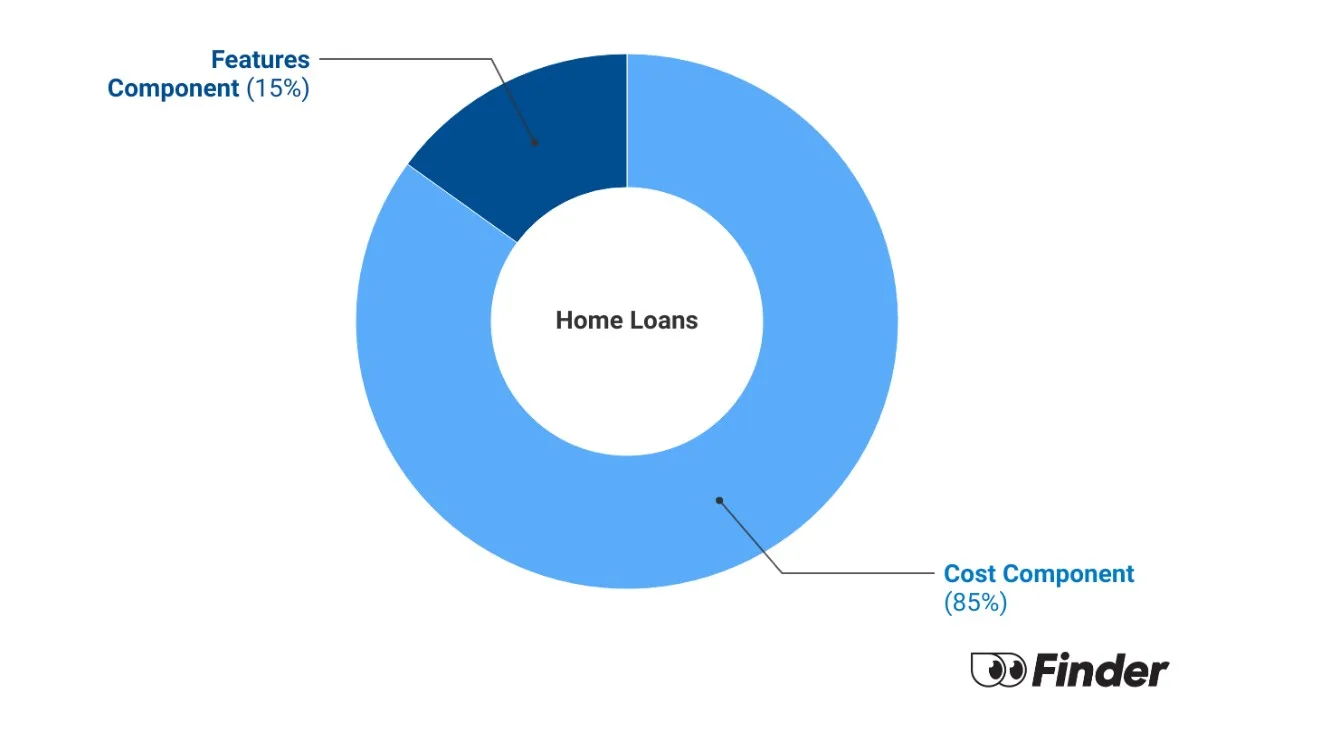
Compare other products
We currently don't have that product, but here are others to consider:
How we picked theseWhat is Finder Score?
The Finder Score crunches 7,000 home loans across 120+ lenders. It takes into account the product's interest rate, fees and features, as well as the type of loan eg investor, variable, fixed rate - this gives you a simple score out of 10.
To provide a Score, we compare like-for-like loans. So if you're comparing the best home loans for cashback, you can see how each home loan stacks up against other home loans with the same borrower type, rate type and repayment type. We also take into consideration the amount of cashback offered when calculating the Score so you can tell if it's really worth it.
Read the full Finder Score breakdown
If you're looking for a honeymoon home loan with an upfront discount you need to make sure that the loan is a good product for you (regardless of the discount) and check that it doesn't have big discharge or switching fees. This could make refinancing more expensive once the honeymoon rate ends.What is an introductory home loan?
Introductory rate home loans are designed with first home buyers in mind. They offer a low rate of interest for a special promotional period (normally about a year), which helps keep your payments down. It’s not unusual for this low rate to be a whole percentage point below the standard rate.
Once the honeymoon rate period is over, the interest rate reverts to the product’s standard variable rate. If this revert rate is too high, you can consider refinancing to a cheaper home loan. This can take a little time and money, but will save you money in the long run.
Your lender may have another, similar loan product you could switch to instead of refinancing with a completely new lender.
Honeymoon home loan calculator
Are honeymoon rates the best choice for you?
The most attractive feature of a honeymoon loan is of course its low introductory rate, but before you choose your new home loan, consider the different ways you can save interest in the first years of your mortgage.
- Fees. Check the loan fees carefully. Most honeymoon rates are on variable home loan products. This means legally the lender cannot charge you a breaking fee. But if it's a fixed rate introductory discount then exiting the loan during this period can be costly because of fixed loan break costs.
- Loan purpose. If you're an investor you need an investment loan. If you're a home owner then it's an owner occupier loan. Most honeymoon home loans are for owner occupiers only.
- Features. Some loans allow you to make extra repayments and spend those extra repayments later via redraw if you need them. This can help you repay the loan faster and have extra cash when you need. An offset account does this but is even more flexible because the money is easier to access. Some introductory loans allow extra repayments but might be harder to find one with an offset account.
If you would like to see what effect additional repayments have on your mortgage, check our extra repayment calculator.
What should you do when the honeymoon rate ends?
Make note of your home loan's honeymoon period. It's usually only for one or two years. Your lender may notify you when the period ends, but they might not. Either way, check your home loan statement or log onto your lender's website and check the new rate your loan is now on. It's likely higher than the honeymoon rate.
Then you should do the following:
- Compare rates. Check the latest home loan rates and see if your new rate is competitive or not. If not, you should consider switching (also called refinancing).
- Find a new loan. Once you've compared rates find a new loan that suits your needs and has a more competitive rate.
- Check switching costs. Once the honeymoon rate is over you will most likely be on a variable rate (even if it was fixed before). The loan may have have a discharge or switching fee of a few hundred dollars. The new loan may have some upfront fees too, such as an application fee.
- Apply for the new loan. Organise your home loan application and hopefully you're successful. Your new lender will handle the change over and you just need to complete a discharge form with your old lender. And with that the honeymoon is over.
Ask a question
More guides on Finder
-
Calculate the income needed to buy a home in any suburb in Australia
Work out how much you need to earn to buy a house in any Australian suburb.
-
How much does it cost to build a house?
How to accurately estimate the cost of building your own house.
-
Why are fixed rates sometimes lower than variable rates?
When fixed rates fall below variable rates, it could portend ominous economic outcomes. We explain how it all works.
-
Home Loans For Discharged Bankrupts
Discharged bankrupts start off their financial state fresh, but some may still find it difficult to get a mortgage. Discharged bankrupts may still get a home loan, but with stricter conditions and higher loan rates.
-
No doc home loans
No doc home loans are rare in Australia, but not impossible to find. Here's how to get a loan without providing evidence of income.
-
Single Income Home Loan
Find out how you can afford a property on a single income and learn how to compare different loans to get the best deal.
-
Bridging Loans
If you haven't sold your house yet, but want to buy your next one before the sale is completed a bridging loan may be able to help. Read on to discover how bridging finance can help.
-
Basic Variable Rate Home Loan
Compare variable home loan rates (big 4 and smaller lenders) so you can get a home loan with a cheap interest rate and no expensive features you won't use.
-
Low deposit home loans
You may be able to get a low deposit home loan with just a 5% cash deposit. Here are the lenders who are more likely to lend you a 95% loan.
-
Bad credit home loans
Find out whether you can get a home loan application approved by a lender if you have bad credit.

